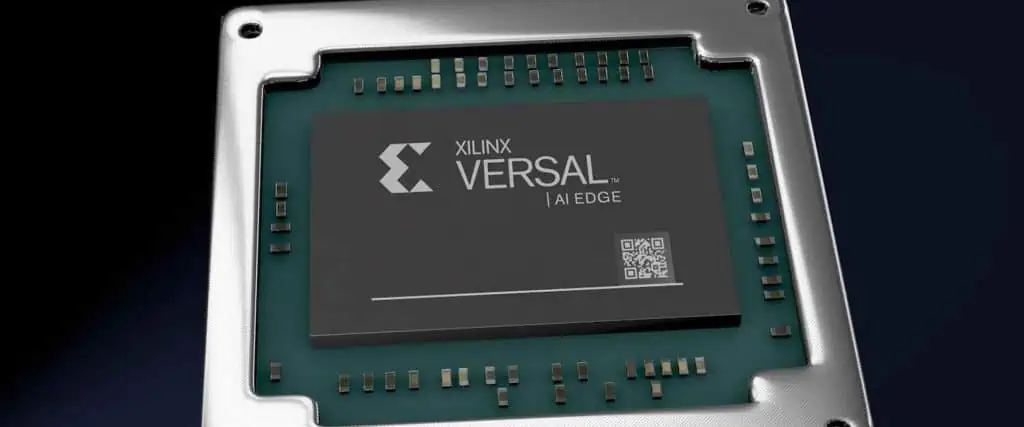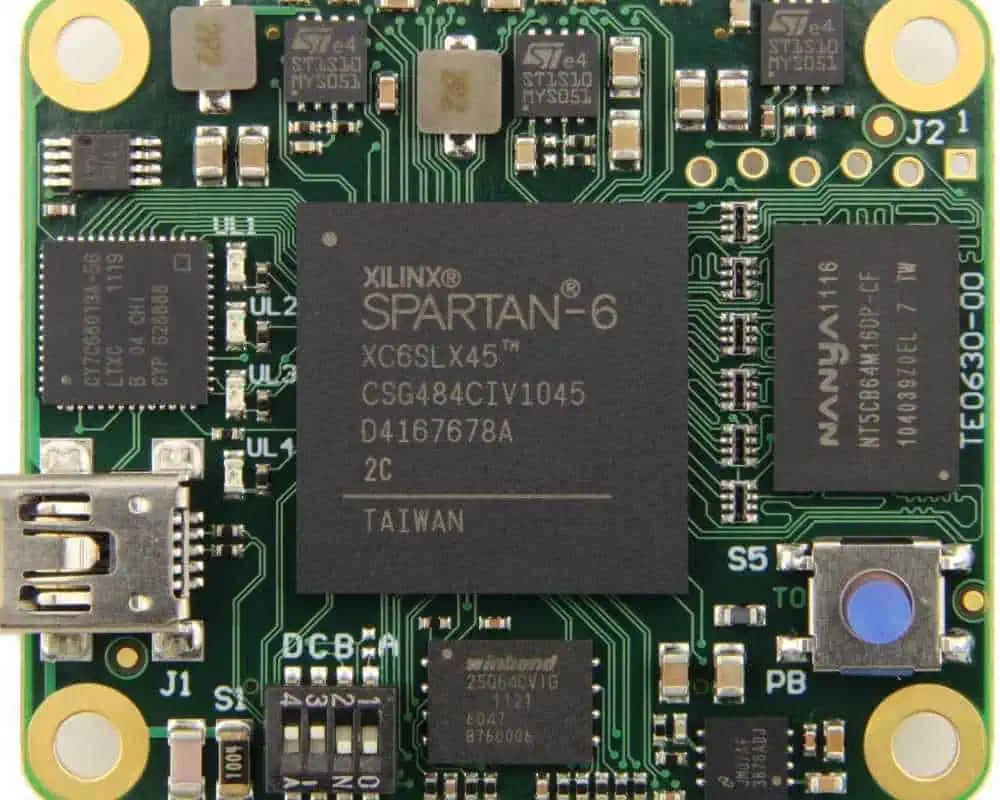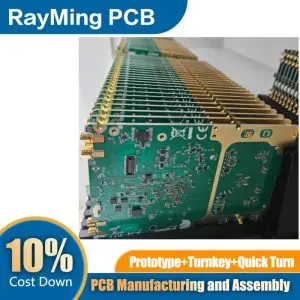In the ever-evolving world of electronics, the demand for smaller, faster, and more powerful devices continues to drive innovation in printed circuit board (PCB) assembly techniques. Two key technologies at the forefront of this miniaturization trend are Chip Scale Packaging (CSP) and fine-pitch assembly. This article explores these cutting-edge approaches, their benefits, challenges, and their impact on the electronics manufacturing industry.

Understanding Chip Scale Packaging (CSP)
Definition and Characteristics
Chip Scale Packaging (CSP) is an advanced integrated circuit (IC) packaging technology where the package is no more than 1.2 times the size of the die. CSPs are designed to minimize the physical size of electronic components while maintaining or improving their performance.
Key characteristics of CSPs include:
- Small form factor
- Direct surface mountable
- Reduced parasitics
- Improved thermal performance
- Enhanced electrical characteristics
Types of CSP
1. Flip Chip CSP

Flip Chip CSP involves mounting the chip face-down on the substrate, with connections made through small solder bumps.
2. Wire Bonded CSP
In this type, the chip is connected to the package substrate using wire bonds before being encapsulated.
3. Wafer Level CSP (WLCSP)
WLCSP is created directly on the wafer before singulation, resulting in a package the same size as the die.
4. Stacked CSP
Multiple chips are stacked vertically within a single package, allowing for even greater miniaturization.
Advantages of CSP
- Reduced footprint and weight
- Improved electrical performance due to shorter interconnects
- Better thermal management
- Higher I/O density
- Cost-effective for high-volume production
Challenges in CSP Implementation
- Requires advanced assembly equipment
- More sensitive to thermal stress
- Increased complexity in PCB design
- Potential reliability issues due to smaller solder joints
Fine-Pitch PCB Assembly
Definition and Importance
Fine-pitch assembly refers to the process of placing and soldering components with very close lead spacing on a PCB. As electronic devices become smaller and more complex, the need for fine-pitch assembly has become crucial.
Fine-Pitch Categories
| Category | Lead Pitch |
| Standard | > 0.65 mm |
| Fine | 0.4 mm – 0.65 mm |
| Ultra-Fine | 0.3 mm – 0.4 mm |
| Super-Fine | < 0.3 mm |
Key Technologies in Fine-Pitch Assembly
1. Advanced Pick-and-Place Machines
Modern pick-and-place machines offer high accuracy and speed, capable of placing components with pitches as small as 0.3 mm or less.
2. High-Precision Stencil Printing
Stencil printing technology has evolved to accommodate fine-pitch requirements, with improvements in stencil materials, designs, and printing processes.
3. Reflow Soldering Optimization
Reflow profiles must be carefully optimized to ensure proper solder joint formation without causing component damage or solder bridging.
4. Automated Optical Inspection (AOI)
AOI systems play a crucial role in detecting defects in fine-pitch assemblies, offering high-resolution imaging and advanced algorithms for defect detection.
Challenges in Fine-Pitch Assembly
- Increased risk of solder bridging
- Difficulty in rework and repair
- Higher sensitivity to PCB warpage and coplanarity issues
- Stringent requirements for component placement accuracy
- Need for advanced inspection techniques
PCB Design Considerations for CSP and Fine-Pitch Assembly

Layout and Routing
- Careful planning of component placement
- Use of microvias and HDI techniques
- Consideration of signal integrity and power distribution
- Implementation of proper thermal management strategies
Solder Pad Design
- Optimization of pad size and shape
- Use of solder mask defined (SMD) vs. non-solder mask defined (NSMD) pads
- Implementation of proper pad finish (e.g., ENIG, HASL)
Design for Manufacturability (DFM)
- Adherence to minimum spacing rules
- Consideration of pick-and-place machine capabilities
- Design for testability and inspection
Material Selection
- Use of appropriate PCB substrate materials
- Selection of solder paste with suitable particle size and flux characteristics
- Consideration of underfill materials for certain CSP applications
Manufacturing Process for CSP and Fine-Pitch Assembly
1. PCB Fabrication
- High-precision drilling and etching
- Implementation of advanced PCB technologies (e.g., HDI, microvias)
2. Solder Paste Printing
- Use of ultra-fine pitch stencils
- Optimization of printing parameters (speed, pressure, separation speed)
- Implementation of automated solder paste inspection (SPI)
3. Component Placement
- Use of advanced pick-and-place machines with high accuracy
- Implementation of fiducial marks for improved placement precision
- Consideration of component-specific placement requirements
4. Reflow Soldering
- Development of optimized reflow profiles
- Use of nitrogen atmosphere for improved soldering results
- Implementation of proper cooling strategies
5. Inspection and Quality Control
- Automated optical inspection (AOI) for solder joint and placement verification
- X-ray inspection for hidden solder joints (e.g., BGA, CSP)
- Implementation of in-circuit testing (ICT) and functional testing
6. Rework and Repair (if necessary)
- Use of specialized rework stations for CSP and fine-pitch components
- Implementation of proper handling and ESD protection procedures
Advanced Techniques in CSP and Fine-Pitch Assembly
1. 3D Package Integration
- Stacking of multiple CSPs
- Integration of different component types within a single package
2. Embedded Components
- Incorporation of passive and active components within PCB layers
- Reduction of overall PCB size and improvement of electrical performance
3. Laser-Assisted Bonding
- Use of laser technology for precise solder reflow
- Enablement of ultra-fine pitch assembly
4. Plasma Cleaning
- Implementation of plasma cleaning processes to improve solder joint reliability
- Enhancement of surface wettability for improved solder paste adhesion
5. Conformal Coating
- Application of protective coatings to improve reliability in harsh environments
- Use of advanced coating materials and application techniques
Industry Trends and Future Outlook

Miniaturization Trends
The push for smaller, more powerful devices continues to drive the development of even smaller CSPs and finer pitch assemblies.
| Year | Minimum CSP Size | Minimum Lead Pitch |
| 2020 | 0.4 mm x 0.4 mm | 0.3 mm |
| 2022 | 0.3 mm x 0.3 mm | 0.25 mm |
| 2024 (projected) | 0.2 mm x 0.2 mm | 0.2 mm |
| 2026 (projected) | 0.15 mm x 0.15 mm | 0.15 mm |
Integration with Advanced Technologies
- 5G and high-frequency applications
- Internet of Things (IoT) devices
- Artificial Intelligence (AI) and machine learning hardware
- Automotive electronics
- Wearable technology
Sustainability and Environmental Considerations
- Development of lead-free and halogen-free CSP solutions
- Implementation of more energy-efficient assembly processes
- Focus on recyclability and end-of-life considerations in package design
Automation and Industry 4.0
- Increased use of AI and machine learning in assembly processes
- Implementation of digital twin technology for process optimization
- Development of fully automated, lights-out manufacturing facilities
Conclusion
CSP and fine-pitch PCB assembly technologies have revolutionized the electronics industry, enabling the creation of smaller, more powerful devices that were once thought impossible. As we continue to push the boundaries of miniaturization, these technologies will play an increasingly critical role in shaping the future of electronics.
The challenges associated with CSP and fine-pitch assembly are significant, requiring ongoing innovation in materials, processes, and equipment. However, the benefits in terms of device performance, size reduction, and functionality make these challenges worth overcoming.
As the industry moves forward, we can expect to see even more advanced packaging solutions, finer pitches, and more integrated assemblies. The convergence of CSP and fine-pitch technologies with other emerging trends such as 3D integration, embedded components, and advanced materials will likely lead to new breakthroughs in electronic device design and manufacturing.
The future of CSP and fine-pitch PCB assembly is bright, promising continued innovation and exciting new possibilities in the world of electronics. As these technologies evolve, they will enable the next generation of electronic devices that will shape our increasingly connected and technology-driven world.
FAQ
Q1: What is the main difference between CSP and traditional IC packaging?
A1: The main difference lies in the size and efficiency of the package. Chip Scale Packaging (CSP) is designed to be very close to the size of the actual silicon die, typically no more than 1.2 times the size of the die. Traditional IC packages, on the other hand, are often significantly larger than the die they contain. CSPs offer several advantages, including:
- Smaller footprint on the PCB
- Improved electrical performance due to shorter interconnects
- Better thermal characteristics
- Higher I/O density
- Often more cost-effective for high-volume production
Q2: What are the key challenges in implementing fine-pitch PCB assembly?
A2: Implementing fine-pitch PCB assembly comes with several challenges:
- Increased risk of solder bridging due to closer component leads
- Higher demands on placement accuracy for pick-and-place machines
- Need for more precise stencil printing to control solder paste volume
- Difficulty in inspection and quality control due to smaller features
- Increased sensitivity to PCB warpage and coplanarity issues
- Challenges in rework and repair of defective joints
- Requirements for more advanced PCB design techniques, such as the use of microvias
Q3: How does the use of CSPs and fine-pitch assembly impact PCB design?
A3: The use of CSPs and fine-pitch assembly significantly impacts PCB design in several ways:
- Requires more careful component placement and routing to manage the higher density
- Often necessitates the use of advanced PCB technologies like High-Density Interconnect (HDI) and microvias
- Demands greater attention to signal integrity due to closer proximity of components
- Requires more sophisticated power distribution network design
- Necessitates careful thermal management strategies
- Calls for stricter adherence to design for manufacturability (DFM) guidelines
- Often requires the use of more advanced PCB materials to meet performance requirements
Q4: What are some emerging technologies that complement CSP and fine-pitch assembly?
A4: Several emerging technologies are complementing and enhancing CSP and fine-pitch assembly:
- 3D package integration, allowing for vertical stacking of multiple chips
- Embedded component technology, integrating passive and active components within PCB layers
- Advanced materials, such as low-loss dielectrics for high-frequency applications
- Laser-assisted bonding for ultra-fine pitch assembly
- Plasma cleaning processes to improve solder joint reliability
- Advanced inspection technologies, including high-resolution X-ray and 3D AOI systems
- AI and machine learning for process optimization and defect prediction
Q5: How is the industry addressing the environmental concerns related to CSP and fine-pitch assembly?
A5: The industry is addressing environmental concerns through several initiatives:
- Development of lead-free and halogen-free CSP solutions to comply with regulations like RoHS
- Implementation of more energy-efficient assembly processes to reduce carbon footprint
- Design for recyclability, considering end-of-life disassembly and material recovery
- Use of more environmentally friendly flux and cleaning agents in the assembly process
- Optimization of manufacturing processes to reduce waste and improve yield
- Development of more durable designs to extend product lifespan
- Implementation of circular economy principles in the electronics supply chain



